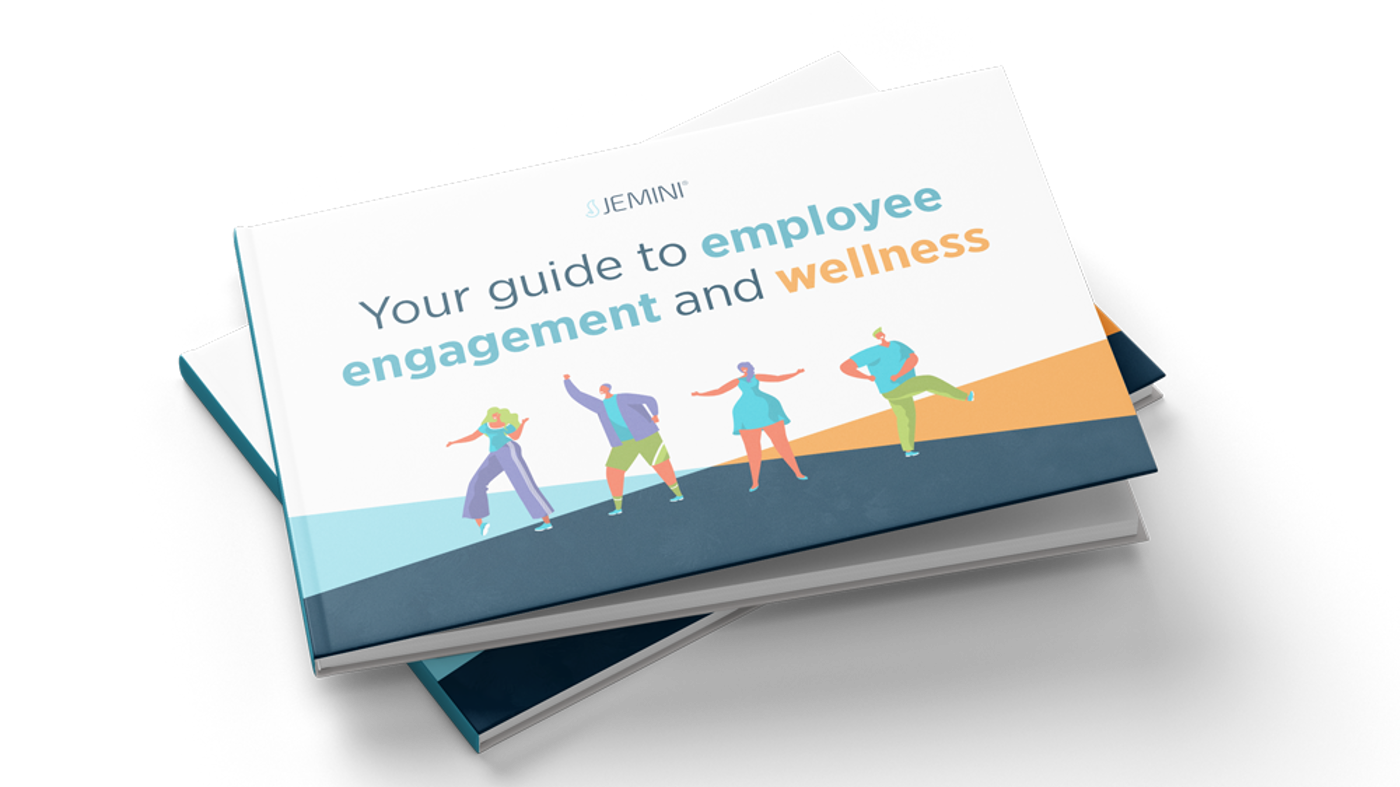- Giving experiences, not money: Recognising that large cash rewards fostered a culture of jealousy and resentment, they replaced it with a rewards programme that offered experiences including travel and meals out. The feedback from employees was that they found the experiences more fun, more memorable, and more thoughtful than the cash rewards - engendering a more positive emotional response.
- It’s the thought that counts (and it doesn’t have to be expensive). Some of Google’s most appreciated rewards are relatively low in monetary value, but score high in terms of the thought and care they show. And Google takes on board what their employees say makes them happy.
- Google runs two types of bonus reward programmes. One where managers can reward the employees who answer to them with cash or a non-cash reward, and the other where peers can nominate others to receive a set value reward. This option acknowledges that a manager may not always see or appreciate individual efforts when out of immediate line-of-sight.
We’d like to thank you for checking out this blog. You rock.
Why? Because we know you want to improve your employees’ engagement and satisfaction. We know it matters to you, and you deserve to be praised for your concern.
And we’re saying ‘thank you’ because we want to demonstrate the power of recognition.
‘Thank you’ motivates and empowers. It makes you want to do better - again and again. It’s the very foundation of a successful employee recognition and reward programme designed to generate results that have a significant impact on the health, wealth, and wellbeing of your business.
So once again, thank you!
What is employee recognition?
Let’s get back to basics and look at what ‘recognition’ means.
Recognition (noun): *
- An act of recognising or the state of being recognised.
- The identification of something as having been previously seen, heard, known, etc.
- The perception of something as existing or true; realisation.
- The acknowledgement of something as valid or as entitled to consideration: the recognition of a claim.
- The acknowledgement of achievement, service, merit, etc.
- The expression of this in the form of some token of appreciation.
In the context of our employees, recognition is the action we take to show our appreciation and gratitude for their contribution to the business. It can acknowledge the efforts of an individual (or a team) for their outstanding work, sales figures, meeting challenging deadlines, contribution to the growth or culture of the company, achieving industry qualifications, length of service, or a customer commenting on amazing service or support. Or just being the person who unfailingly and without complaint loads and unloads the lunchroom dishwasher.
Whatever the reason, it’s that ‘wow, you did good’ moment. And we’d like to thank you for it.
Employee recognition in its purest form is openly and sincerely acknowledging an employee’s contribution to the business. And expressing your appreciation for their efforts with a call-out in a meeting, a mention in a newsletter or on the intranet, or even just a high five.
Many organisations now support employee recognition with a structured employee rewards programme designed to be a powerful strategic tool.
A well-designed rewards programme can give your business a competitive edge when recruiting new talent. It can improve employee engagement and morale, reduce attrition, improve retention, and increase productivity. And it can also support and champion your company culture and values with altruistic rewards to special interest or community groups or not-for-profit organisations.

What are some examples of employee reward programmes?
Employee rewards programmes can vary in complexity depending on the culture and size of business. Recognition and rewards will vary from organisation to organisation, and how you appreciate employees will depend on your unique company needs.
For a smaller business, it could be a calendar-based programme with a series of employee or teammate of the month awards, a company outing to celebrate an achievement, or a selection of rewards and hand-written gift cards.
For a larger organisation, a more sophisticated reward and appreciation programme may combine a point system, a social wall, and meaningful peer nominations, and culminate in a formal event.
Google consistently rates highly as an employer. So what makes their rewards programme unique - and successful? They divide their rewards into three categories:
Whose job is it to give recognition?
As demonstrated by Google’s use of two types of bonus rewards programmes, recognition can come from the top and from a peer. But it can also come from below!
From the top
The traditional top-down process is driven by an employee’s team leader or manager. However, it requires busy managers to witness, record, track, and reward countless contributors. While manageable, it’s easy to overlook milestones and accomplishments, or make acknowledgements so late that the time to celebrate has passed.
From peers
The peer recognition model uses 360 degrees of employee feedback. It solicits recognition from those who work beside an employee daily. After all, they are in a much better position to witness and appreciate a workmate’s contributions than someone at an arm’s length.
From below
Managers need love too! Recognition is motivating at every level, so empowering employees at all levels to express positive feedback for good deeds, accomplishments and milestones is not only fair but benefits everyone.
When should recognition be given?
If you are formalising an employee recognition and rewards programme, then you also need to decide what you are going to recognise as reward worthy.
Whatever you choose, one of the most important things is to make the process timely! Right after a project - not a month later. The week of someone’s significant work anniversary - not in a 6-months later news round-up.
- Going over and above. Recognising employees for their extra effort and exceptional results and outcomes is a given for any rewards programme. Celebrating workplace triumphs - large and small - should be a part of everyday work life to help maintain enthusiasm, morale, momentum, and motivation.
- Milestones. A completed project, a significant birthday or life event, the end of a successful sales quarter and year-end. These are all events to celebrate.
- Loyalty. Recognise service anniversaries by acknowledging the progression of the employee’s skills or career path, and their unique contribution to the business. Highlighting dedication and commitment shows newer employees that their service too, will be valued and rewarded.

Why is it so important to recognise and reward your employees?
Not only does employee recognition contribute to a more satisfied workforce, but it can have a positive impact on your bottom line.
According to Gallup: “In today’s war for talent, organisations and leaders are looking for strategies to attract and retain their top performers while increasing organic growth and employee productivity. But in their search for new ideas and approaches, organisations could be overlooking one of the most easily executed strategies: employee recognition.”
Employee recognition is proven to improve your:
- Ability to attract the talent you need to grow your business. And 200,000 job seekers can’t be wrong! When asked in a global survey to choose the most important attributes of a new job, “appreciation for my work” ranked as number one out of 26 options offered.
- Ability to retain the talent you need to grow your business. Gallup found that employees who feel they’re not adequately recognised are twice as likely to say they’ll quit within the next 12 months. AndGlassdoor reports that 53% of employees would stay at their jobs longer if their employers made an effort to show them more appreciation. To drive the point home, C. Tanner said that “Effectively recognising years of service can help with retention as well. By having a service award program, companies can retain employees for 2-4 more years than companies without a service award program.”
- Levels of employee engagement. According to C. Tanner, 78% of employees are highly engaged when they feel strong recognition from their organisations. In comparison, only 34% report feeling highly engaged in companies with poor employee recognition.
- Company O.C. Tanner Institute also reports that 48% of leaders and 57% of employees say that ‘making employees feel valued and appreciated’ is the aspect of workplace culture that is most important to them.
- Employee performance and innovation.C. Tanner said that “employees who receive strong recognition are 33% more likely to be proactively innovating and generate twice as many new ideas per month. They are twice as likely to be highly innovative, and are also more likely to be working at 80% capacity or higher.” And they acknowledge that: “Recognition is more effective than a salary bonus at encouraging people to be more innovative and productive.”
Building an employee reward & recognition programme - the six steps to success
It’s critical that your recognition and rewards programme reflects your company culture, and engages and aligns your employees. Understand what motivates your employees to do better, and what drives them. As mentioned earlier, Google found out it wasn’t all about money.
But first things first.
Step 1: Establish a starting point. Before anything, determine and document your starting point. What does your current programme look like? Or if you don’t have a formal strategy, what have you done informally, but consistently?
Step 2: Ask for employee feedback. Engage employees and managers in focus groups and online surveys to establish what you do well, where there are gaps, and where there’s a disconnect between the business and the needs of your employees. Find out what rewards they consider appropriate for different types of recognition (milestones, exceptional performance, anniversaries, etc.) to determine criteria, and what they’d like to see in a points programme catalogue. Also, identify any instances where recognition should have been given - but wasn’t - to help develop a more thorough process.
Step 3: Align management. Senior leadership buy-in and commitment is critical. Ensure that the business management and executive layer understand the purpose of a recognition and rewards programme, and how it benefits the business in terms of employee recruitment, retention, and productivity. While the recognition and reward process may be run through the HR department, it’s up to individual managers to show their appreciation for the people in their teams.
Step 3: Set your budget. Rest easy - recognition programmes don’t have to be expensive to be effective - and the impact of a good one will repay you many times over. In fact, 81% of companies who run recognition programmes do so on less than 1% of their payroll budget!
Step 4: Design your employee recognition and rewards programme. This is the why, what, and how often part! Choose what employee behaviour or achievements you will reward, what the rewards will be, and the frequency. (The next section offers a range of suggestions to check your plans against.)
Step 5: Find the right platform for your business and employees. Evaluate potential rewards and recognition platforms to discover which will integrate seamlessly with your HR solution, support your employee life cycle, and geographic spread. Ensure that whatever you choose meets the needs of the modern hybrid (office-based and remote) workforce.
Here’s our suggested platform checklist:
- How is it deployed? (cloud, mobile, desktop)
- Does it enable manager-to-peer and peer-to-peer recognition?
- Does it support performance management?
- Does it have recognition tracking?
- Is there an easy to administer and update rewards catalogue?
- Does it capture and manage rewards points?
- Will it support social recognition?
Step 6: Sell it! Decide how you are going to communicate the details of your employee recognition and rewards programme to those who need to administer it, and those who will benefit from it. Encourage peer-to-peer reviews and recognition and motivate people through ongoing and regular employee of the week/month/year awards.
Designing an employee reward & recognition programme for the hybrid workforce
You’ve reviewed your past activities, taken on board employee feedback, have management and leadership buy-in, and have chosen a platform to help you run your programme. And we’re sure you already have a draft structure in mind for your employee recognition and rewards programme. But just in case, here are some suggestions which include ways to recognise and reward your remote or work-from-home employees and on-site staff!
First day on the job!
While we are used to new employees being introduced around the office and taken for coffee or lunch on their first day, it’s important to remember those who are permanent work-from-homers. When you send their laptop and other job essential assets, why not add in a gift of a company pen, mug and desk plant or flowers?

Happy birthday to you
Even in adulthood, birthdays are special to most of us. And one excellent reason to celebrate them at work is that job hunting jumps 12% just before birthdays. For those in the office, what you will or can do is going to depend on the size and nature of your business. But how do you extend that to a remote workforce? Consider e-cards signed by the team, birthday wishes on a social wall, a virtual morning tea with their team, delivery cake or flowers, or an online redeemable gift voucher. Or as many companies do, a day off with pay after reaching an employment milestone - which works well for the entire workforce.
Work anniversaries
With the use of technology, it’s effortless to record and flag milestone work anniversaries. However, work anniversaries are often a time of reflection for an employee. Research by CEB showed that job-hunting activity rises by 6% around the anniversary of when someone first joins a company, and by 9% on the anniversary of starting their current position. It’s essential to turn a time of risk into a meaningful and sufficiently detailed affirmation of an employee’s value to the business. A simple card just won’t cut it. Consider gifts which will be appreciated by on-site and remote workers, like restaurant vouchers, travel vouchers, or specific interest vouchers where an employee’s hobbies (for example gardening, painting, or cycling) are known.
Well done, you!
Achieving targets, completing large projects or tasks, turning a loss into a win, gaining industry qualifications, running a marathon, or winning an industry award are all noteworthy personal or professional events. So how can you recognise and reward a hybrid workforce without discriminating on where they’re located?
A personal thank you for an in-office staff member can be delivered to a remote employee via a live video meeting. A spot cash bonus can be distributed equally well inside a gift card or in an e-card. Remote employees can be singled out for praise during virtual team meetings, and the chat function used to pass on congratulations from peers. And written praise on a hand-delivered or mailed thank you note, or email, can not only show your appreciation but represents tangible proof of an employee’s contributions.
Introducing an online rewards portal (where the item can be downloaded, emailed, or delivered) provides the same experience for every member of a hybrid workforce. Rewards can include prepaid gift cards, grocery, travel or shopping vouchers, movie tickets, meal vouchers, petrol vouchers and more.
Peer appreciation
By developing a social wall on your intranet, you can enable workmates to call out and praise their peers’ accomplishments, effort, or contributions, and nominate them for awards. Or allow team leaders and managers to award discretionary points the recipient (WFH or otherwise) can redeem on the company’s rewards portal.

Summary
We started this blog with a thank you. And now that you’ve hopefully read most or all of it, you’ll understand why.
By taking some time and effort to understand the value of appreciation and acknowledgement in the workplace, you can improve your ability to attract and retain valuable employees, and increase productivity and innovation. And best of all, build a happier, more engaged workforce.
Explore more
Share this page
Ready to transform your HR & Payroll process?




